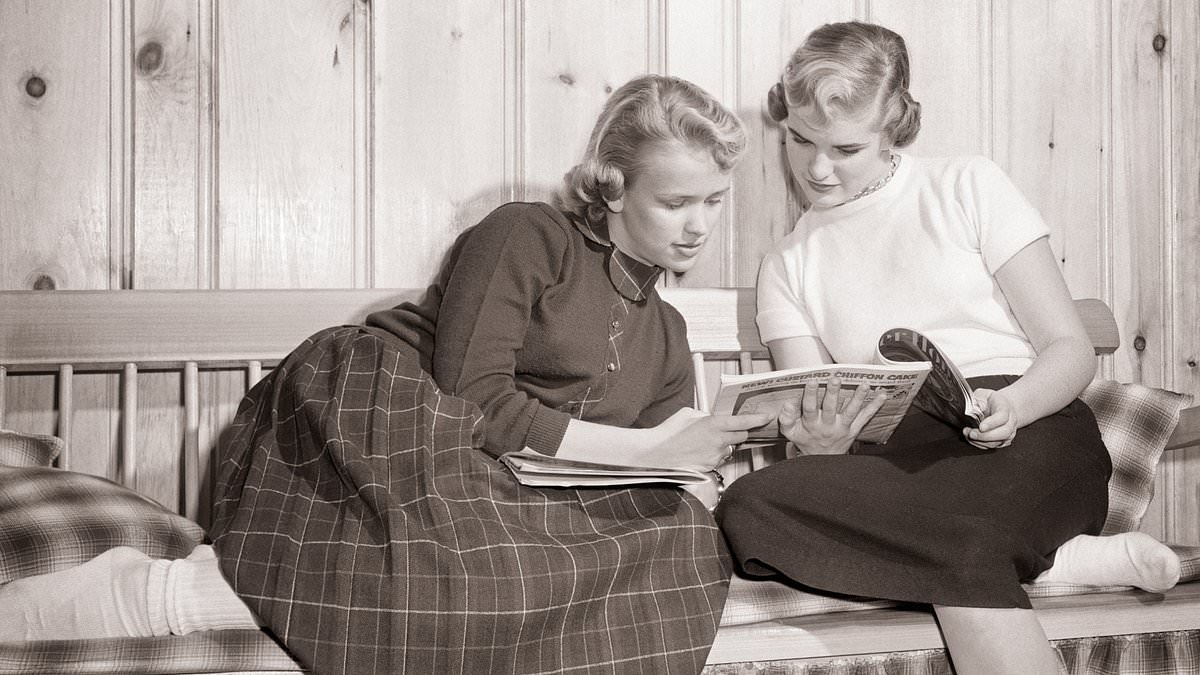QUESTION Does anyone remember girls’ romance comics such as Valentine and Serenade?
I loved reading girls’ romance comics when I was in my early teens in the 1960s. As well as Valentine, I remember Boyfriend, Roxy, Romeo and Marilyn.
I still have the Boyfriend Book 1961 which has features and photos of Cliff Richard, Elvis Presley, the Everly Brothers, Billy Fury and other pop stars of the day.
There are simple recipes on cooking for a surprise party while, on the problem page, a worried reader complains that her boyfriend gets furious when she wears trews.
I often read it when I’m feeling nostalgic: it was such a carefree time for teenagers then.
Janette Gerrie, Greasby, Wirral
I won a competition organised by Valentine magazine. It was an invitation to a New Year’s Eve Ball at the Waldorf Hotel in London. The competition asked, who would be your choice of Valentine for 1960?
My winning entry was: ‘My heart- throb is a handsome boy, With big brown eyes that bring such joy, Such dark brown hair… how the girls all stare, In 1960 I’ll be Feelin’ Fine, ‘Cos Cliff is my choice of Valentine!’
Feelin’ Fine was a hit for The Shadows. I had a wonderful evening and met many stars including Shirley Bassey and the Beverley Sisters. Happy memories.
Decima Barnes, Barnsley, South Yorkshire
The 1950s and early 1960s produced many comics fondly remembered today. For boys, there was the Victor, Valiant, Warlord and Eagle, featuring Dan Dare, Pilot of the Future. The girls had Mirabelle, Valentine, Roxy, Marilyn and Serenade.
The idea of the romance comic had been pioneered in Italy and Spain and artists such as Ferdinando Tacconi and Roberto Gonzalez Casarrubio were drafted in to work on the British versions.
These comics tackled the travails of teen romance and the stories could be quite intense.
The magazines also featured insights into pop stars’ lives, lifestyle features and agony aunt columns.
Gina Smith, Aylesham, Kent
QUESTION How do Native American naming systems work?
Native American naming traditions vary from tribe to tribe (of which there are more than 500).
Names can be based on a range of categories such as nature, gender, appearance, totem animals and tribal structure and they might change over time according to deeds and life experience.
The Navajo people are a matrilineal society, with each member belonging to four different clans.
They introduce themselves by listing their clans in this order: their mother’s clan, followed by father’s, maternal grandfather’s and paternal grandfather’s.
However, Navajo will mostly go by their nickname; names such as Little Goat, Man Who Walks Around, Dark Water, Brave Bear, Chief-who-Guards and Speaks-with Spirits.
A Navajo member’s ‘true’ name is sacred and used only for spiritual ceremonies.
Conversely, the Sioux (Lakota, Nakota and Dakota) do not use family names.
They use a complicated system with six classes of names: birth order, honour, special deed, nicknames, secret and spirit names.
They are given their everyday name at birth but that will change with experience. For example, Chief Sitting Bull was called Jumping Badger as a boy, but also nicknamed Slow.
For the Cherokee, an elder would give a name — usually before the baby was a week old — based on observations of the child’s behaviour, physical characteristics or a noteworthy event surrounding the birth.
Examples include She Brought Happiness, Swimmer, Redwood, Young Squirrel and Guardian Of The People.
The naming system is often ritualistic. For instance, the Hopi tribe of Arizona has a ceremony whereby the newborn baby is wrapped in a blanket alongside a perfectly formed corn stalk, reflecting Mother Nature.
On the 20th day, the corn is rubbed over its body and the baby receives its name in a sunrise naming ceremony.
Hopi names are often nature- related: examples include Blossoms Stand, Little Bear and Blue-bird.
Martin Fuller, Bath, Somerset
QUESTION What is the origin of the term ‘fleapit’ when speaking about a local cinema?
Further to the earlier answer, I can confirm that fleapits were indeed a reality.
In the Staffordshire town of Biddulph in the 1960s, we had a cinema called The Palace known throughout the area as ‘Biddulph Scratch’.
The unpleasant usher who corralled us into our seats for the Saturday matinee was known as ‘Slink’.
Robert Williams, Stafford
